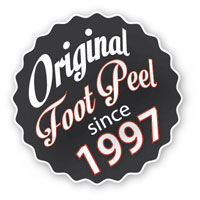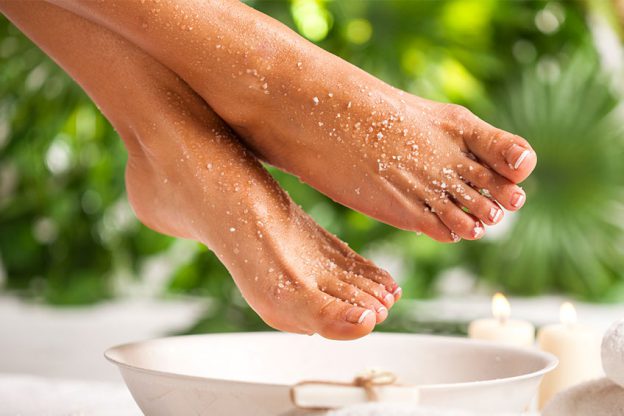Everyone is after healthy glowing skin, and you don’t have to look far to find dozens of products that promise to make your skin flawless. When you’re looking for the best way to brighten up your skin, exfoliants are the way to go. The challenge comes in choosing the best exfoliator for you and knowing to properly apply them.
There are several options to choose from, and you have different types of skin on your body that will react differently to each exfoliant. First, let’s explore the types of exfoliants and discover which is best for your skin! After that, we’ll give you tips on how to exfoliate to get the glowing skin you want.
What are the types of exfoliants?
Exfoliants can be broken into two main categories: physical and chemical. Physical exfoliants usually include small particles like seeds, shells or sugar to exfoliate, while chemical exfoliants use chemicals to help the skin peel. No matter which type of exfoliant you use, the general effect you use is the same: your dead skin will be shed, bringing fresh, healthy skin to the front.
Physical exfoliants
Physical exfoliants can be applied with your hands or a brush. When using physical exfoliants, you’re able to better feel the exfoliation as it happens. You will need to wash the grits of a physical exfoliant off of your face when done. There is usually no limit to the amount of time that a physical exfoliant can rest on your face. Be aware that strong physical exfoliation can cause your body to fight back and cause skin issues like callouses.
Chemical exfoliants
There are two main types of chemical exfoliants that are often used on the face and body: AHA and BHA. Alpha hydroxy acids (AHA) come from fruit and help dead skin remove itself. Beta hydroxy acids (BHA) reach deeper into the skin and are usually used on the face since they can help with acne. Depending on the chemical’s strength, you may feel a tightening feeling or no feeling at all while using them. Chemical exfoliants are usually only supposed to be on your skin for a certain period of time, after which they should be washed off.
Which is the best skin exfoliant?
When considering which exfoliant is best for removing dead skin, there’s a lot to keep in mind. Here are a few things you should consider when purchasing an exfoliant:
The best way to exfoliate sensitive areas like your face
Areas that are more sensitive should avoid using physical exfoliants since they can easily irritate your skin. This can include areas like your face or hands. If you are trying to unclog pores, you may want to switch between an AHA and BHA to get the best results.
How to exfoliate tougher areas like your feet
Like elbows and feet, areas of your body that often have tougher skin can take some stronger exfoliants. Physical exfoliants like scrubs and pumice stones can remove dead skin that won’t come off using other methods. Be careful not to over-exfoliate, though. It can be painful and cause damage to your skin.
What results are you looking for?
What result do you want? Are you trying to improve your skin texture or get rid of dead skin? Both types of exfoliants accomplish both jobs, but generally physical exfoliants will be better at evening texture, while chemical exfoliants are better at getting rid of dead skin.
How to get smooth skin
No matter what kind of exfoliant you use, consider the following tips to ensure you get the most out of your exfoliant experience.
Don’t exfoliate your skin too often
You might be wondering, “How often should I exfoliate?” You might even be wondering whether you can exfoliate too often. The answer is, “Yes.” You should never exfoliate your face, or any other area on your body for that matter, more than one time a week or once every other week depending on the strength of your exfoliant. While exfoliating is good for your skin, it can be harmful if you do it too often, causing irritation and sensitivity. You should be especially careful with physical exfoliants, as they can open up microtears in your skin. Microtears are no one’s friend — not only will they cause uneven texture, but they can also worsen acne on the face and back.
Prepare your skin before exfoliating
Make sure your skin is washed and dry before applying a peel. You may opt to soak your skin for 30 minutes prior to a peel to ensure your skin is soft and prepared. If you have any cuts on your skin, we suggest waiting until your skin is healed so you don’t further irritate your skin. Be wary of any further damage on your skin like a sunburn or painful dryness — adding an exfoliant on top of irritated skin can be painful.
Don’t be afraid to experiment
If your first bout with exfoliants doesn’t go the way you want, try out another type. Each exfoliant you buy is different, and each will have a different physical or chemical composition. Skincare is all trial and error — you’ll need to see how your skin reacts to different products before you find the best exfoliator.
When it comes to foot exfoliants, Baby Foot has you covered. We offer a selection of different foot peels, including our Original Exfoliation Foot Peel to get your feet shining and smooth in just a few days. To keep your feet hydrated and moisturized after a foot peel, try our Moisturizing Foot Mask.
Want to try it for yourself? Check out our products!


